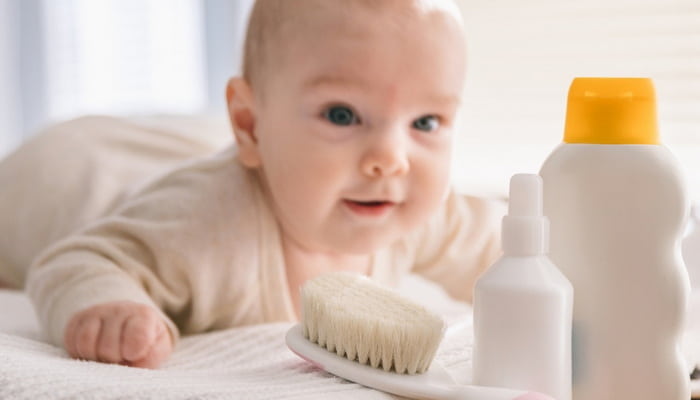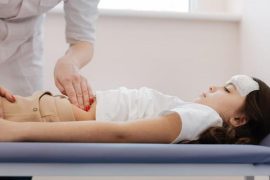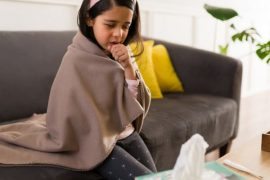Зміст
Baby acne is a skin disease that can appear in the first months of a child’s life. Skin lesions are mild and usually go away on their own within a few weeks. The main cause of acne in children is considered to be increased levels of androgens, which overstimulate the sebaceous glands. Using cosmetics containing mineral oils on a child can also contribute to skin changes. How to deal with childhood acne?
Baby acne – what is it?
The skin of a newborn or baby is not always perfectly smooth. Up to 20% of infants have skin lesions in the form of comedones. This condition is called neonatal acne or childhood acne, depending on the age at which the skin lesions appeared. Neonatal acne occurs when the rash appears between the 3rd and 4th weeks of a baby’s life, is mild in nature, and then disappears spontaneously within 6–12 weeks. However, when the onset of the disease is delayed and the first skin lesions appear between 6 and 12 months of a child’s life, they speak of infantile acne. Cases of acne in children lasting more than 12 weeks are rare.
Acne in infants is most often located on the face, mainly on the cheeks, chin and eyelids. Sometimes they can also appear on the scalp, neck or upper chest. They look like open (black) or closed (white) comedones, papules, pustules and, less commonly, subcutaneous nodules. Baby acne is much more common in boys than in girls.
The development of acne in infants is explained by the influence of maternal androgens and hormones produced by the newborn, whose immature adrenal cortex excessively produces steroid hormones, in particular dehydroepiandrosterone. Hormones from both mother and baby cause overstimulation of the sebaceous glands. It is also worth knowing that the skin of newborns and infants is not yet fully mature and physiologically produces more sebum. This phenomenon is regulated during the first 6 months of life. Another cause of acne in children is the use of mineral oils in skin care.
What to do about childhood acne?
In the vast majority of cases, childhood acne goes away on its own. Proper skin care for your baby is still critical.
- First, avoid using cosmetics containing mineral oils. Choose cosmetics that do not contain paraffin, petroleum jelly and microcrystalline wax. Do not use olive oil or heavily moisturizing lotions. Including these medications in your daily skincare routine may cause your skin to worsen.
- When choosing baby skin care products, look for ones that are designed for use from day one.
- Starch baths can be used as an addition to skin care.
- For daily care of acne lesions, use preparations containing zinc oxide.
- Remembering to practice good hygiene, change your child’s bedding and bath towels frequently.
- Use gentle detergents for washing, intended for people with sensitive skin.
- Do not overheat your baby. Due to the not yet fully developed thermoregulation system in infants, they sweat quickly. This, in turn, contributes not only to the occurrence of prickly heat, but also to the aggravation of changes in the course of acne in children.
- Make sure your child’s room is at a suitable temperature. During the day it should be 22 degrees, at night 20 degrees.
- Also, do not forget to ventilate the rooms in the house often enough.
Baby acne – how to treat it?
Childhood acne most often goes away on its own. Most children do not require treatment, and proper care remains key. However, sometimes the severity of the changes and their long-term persistence may require treatment. However, be sure to consult your doctor first about any skin changes. When treating acne in infants, external preparations containing antibiotics (primarily erythromycin) are used. Remember to strictly follow your doctor’s recommendations. Do not shorten or extend the treatment time on your own.
How long do baby acne last?
Baby acne usually lasts for a few weeks at most. In some cases, skin lesions persist for several months. In such a situation, it is necessary to consult a doctor, who will then recommend appropriate treatment.








